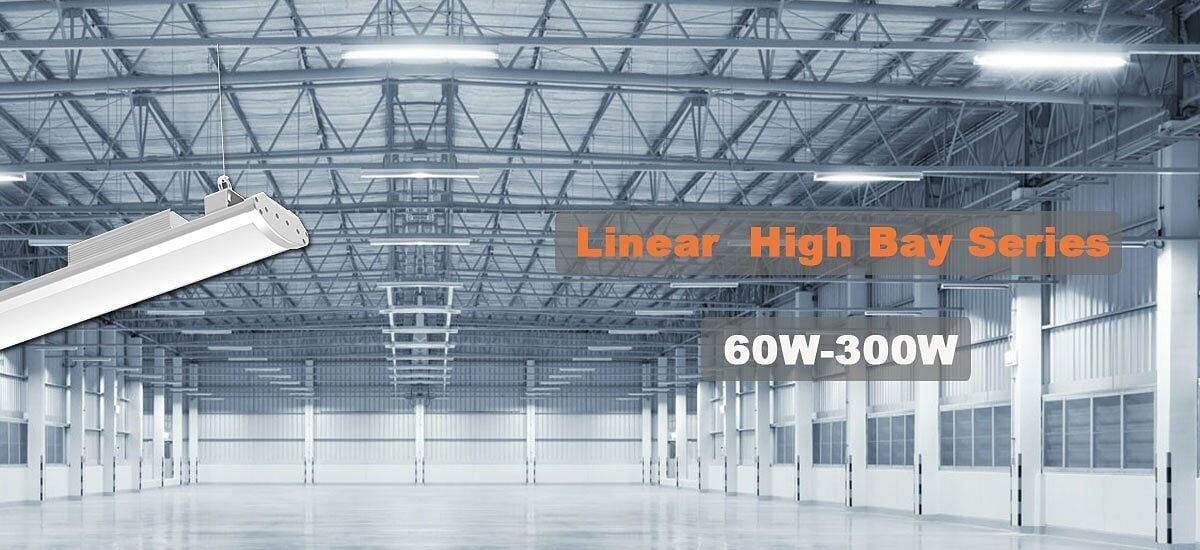High Bay / Low Bay are lighting terms used to describe the correct bay lights needed for the appropriate ceiling height. Historically, perhaps the Low Bay was ‘flat white box light,’ and a High Bay was a pendant type high bay while the physical properties were ignored?
Heavy-duty lighting projects, like those often done in large buildings such as warehouses, factories, and processing plants, typically require high bay or low bay lights. These high lumen output lights are designed to provide well distributed and uniform light in open areas.
This is what high bay and low bay lights have in common.
But how do they differ? Below, we settle the low bay vs high bay lighting question.
What are High Bays?
High bay lights are usually used in open, high-ceiling areas. Typically, we define high bay lights as those that are designed to be installed anywhere between 20 ft to 40+ ft height above the floor. For these lights to be effective this high up, they need specifically engineered reflectors (for HPS / MH bulbs) or lens (used in LED high bays) to ensure light reaches the floor evenly and reduces wasted light.
What are Low Bays?
As the name portrays, these bay lights are often used with lower ceilings in open areas. Low bay lights are often designed to illuminate open areas with ceilings between 12 ft to 20 ft. Anything over this height will qualify for the use of high bays, and anything lower is very uncommon in large open area facilities, and would otherwise require a different type of light fixture entirely.
What is the definitive difference?
In short, the height in which these lights are used is the main difference in terms of their application differences. For technical differences, there are two main things: lumen output and how they direct their light. Commonly with lower lights, they will require less lumen output due to their nature to lose less light. Secondly, the reflector or lens angles vary greatly as different heights call for different directions and placement of light.
All of this matters because using the wrong fixture (a high bay in a low-ceiling area, or a low bay in a high-ceiling area) can result in unnecessary costs along with under-lit (or over-lit) areas – which can easily cause hazardous conditions. To avoid this, we always recommend asking a pro for advice before committing to one fixture over another.
Different performance with a different lens
Consider taking the total 22500 lumens out of a 150-watt bay light and think about where these lumens are going? Led Low Bays will output at around 120 degrees and keep traveling until they hit a floor or wall where they then will be absorbed and reflected. The amount of absorption/reflection will depend on the reflective properties of the walls and floors.
Therefore, if you have a warehouse with a 20ft mounting height with light-colored walls and floors, then it is possible to use an LED Low Bay and get an excellent level of uniformity.
If, however, you have a 20ft mounting height and a dark and dirty environment, a High Bay with a 60-degree lens will direct all the 22500 lumens into an area covering 60 degrees on the factory floor. This will result in a much higher lux level at floor level when compared to an LED Low Bay mounted at the same height.
There is also the option of using a narrow lensed(30 degrees) high bay that is ideally suited to racking applications where the lens directs the light exactly where needed down the racking aisle rather than illuminating the top of the racking.
There is always a balance between the correct luminaire and the commercial implication of the cost difference between a Low Bay and High Bay.
How to choose?
Fireflier has a range of Low Bays and High Bays that are suitable for all types of warehouse and factory applications from 12ft to in excess of 40ft.
Simple lighting simulation of the proposed area can show the different lighting levels achieved by using different products. If you know the height of your open area facility, it will be easy to make the call between needing high bay vs low bay lights. If you need help with the process – be sure to get in contact with Fireflier Lighting and one of our lighting professionals will gladly help you settle your high bay versus low bay debate.






